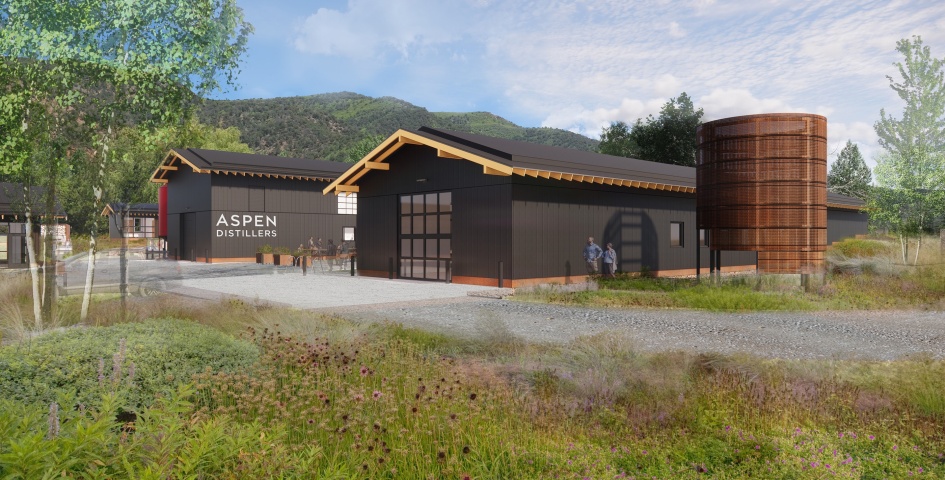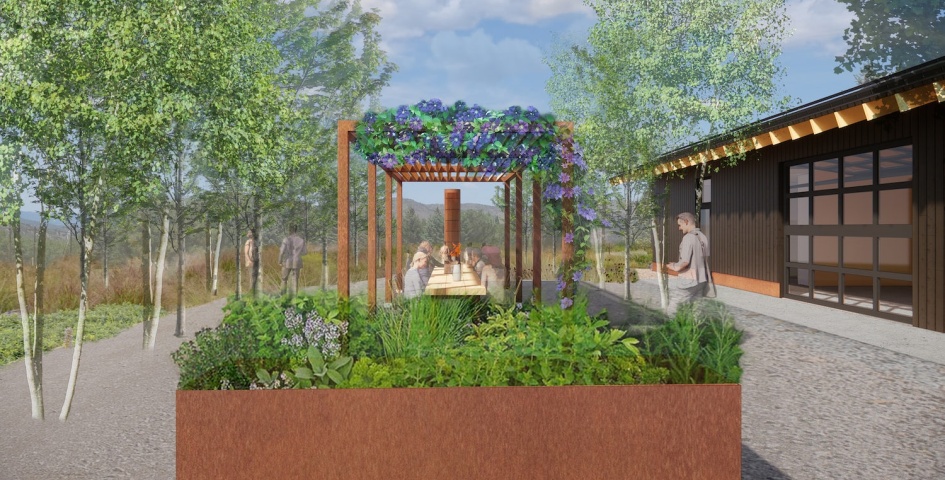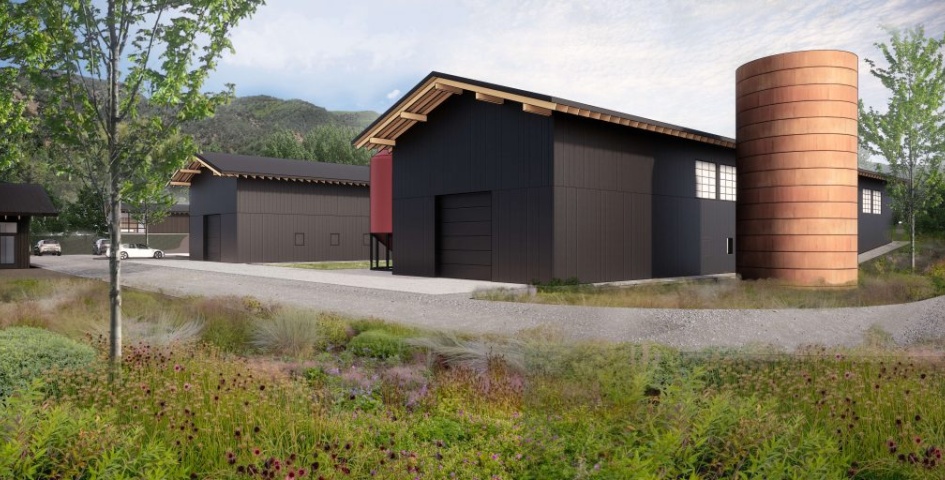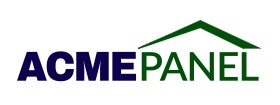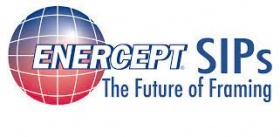SIP Headquarters Aspen CO
Location: Basalt, CO
Project Information
| Project Type: | Commercial, Other Commercial |
|---|---|
| Manufacturer: | Premier Building Systems |
| Builder: | RWI Construction |
| Design Professional: | Anderson Mason Dale Architects |
| Year Built: | 2023 |
Performance
| High Performance: | No |
|---|---|
| HERS/EUI Index Score: | |
| ACH50 - Blower Test Results: | |
| kBtu/sq.ft./year: | |
| CO2 lbs./sq.ft./year: |
Awards/Certifications: Building Excellence Awards
BEA: 2024 Building Excellence Award - Classic Runner Up
Building use: A paradigm-shifting distillery placing sustainability at the heart of its production, operation, and facilities. Including a headquarters building, production rickhouse, and three employee residences in the future. The facility is fully electrified, carbon negative and 100% of the water used will be treated on site and returned to the Roaring Fork River cleaner than when taken. On-site agriculture will support local food production.
How did SIP construction help you get this job? Sustainability at the core of the project, seeking Living Building Certification. One of the few commercial to pursue this certification in North America. The project is also currently waiting on LEED Platinum certification. SIPS married well with the requirements of these certifications. SIPS also enabled long term energy efficiency and totalnet positive energy operations, full electrification of all systems, and carbon negative project design, construction and long term operation.
SIP roof thickness and core material:10”
Describe the benefits of using SIPs on this project. Did SIPs help save time, labor, construction costs, or energy? The reasons for choosing SIPS is multifaceted:
- The Embodied Carbon Footprint Imperative strives to minimize a project’s carbon footprint – the carbon that is associated with the materials used to construct the building. To meet this Imperative, the design-build team incorporated carbon reduction strategies early in the project’s design phase. Choosing SIPS in the wood framing and as the primary structural element was critical because it has one-sixth of the embodied carbon of steel or concrete.
- In addition, the Imperative aims to offset the environmental impact of the project’s construction process. Reducing jobsite waste is a well known benefit of SIPS offsite construction methods.
- Further, energy savings from SIPS airtight and thermal properties lend to the sustainable operational goals of the distilling complex.
- SIPS also contribute 40+ points to commercial LEED certification aiding significantly in the LEED Platinum application process.
- The desire to reduce materials in this project worked perfectly with SIPS OSB which can be left exposed as a finished surface allowed the interiors spaces to achieve the environmental goal and aesthetic.
Describe any innovative design elements or structural engineering involved: Wood is the primary structural material, and SIPS ability to span large expanses enabled the open nature of all facilities. See imagery from design team.
“Aspen Distillers’ design is one the most detail-oriented projects that I have consulted on. The uniquely creative design that combines efficiency and sustainability makes it a must-see for those in the industry” said Patrick Kelty, president of VITOK Engineers. Kelty has more than 30 years of experience and has played a role in almost every new distillery or major expansion for almost all of the major beverage distillers in North America.
Please list any certifications the project received, such as ENERGY STAR, LEED, National Green Building Standard, WELL, Passive House, Green Globes or local green building programs. Only list certifications that are completed: Aspen Distillers™ is proud to be the first distillery to register for the Living Building Challenge sustainability certification — the built environment’s most ambitious performance standard. For context, this achievement is now shared by only 30 buildings in the world.
This certification goes beyond LEED and others to include the following:
- Sourcing materials that are Red List free
- Tracking embodied carbon from construction
- Using salvaged materials and responsibly sourced wood and stone
- Striving to eliminate waste during construction
- Sourcing materials from local industries
Also currently pursuing LEED Platinum Certification.
Describe the HVAC system used on the project: High performance programmable multi zone HVAC (pending specific details from from design team.)
Describe any other energy-saving materials used in the building envelope other than SIPs. List U-values of windows used and the U or R-value of any insulation materials: Triple pane windows
Please list any energy-efficient products or design features, such as lighting, hot water heating, appliances, passive solar:
ALL! Starting with the envelope, and solar orientation to use the large acreage. The developers and design team carefully selected building materials and process to ensure responsible sourcing and minimize environmental impact - intentionally limited material palette using mostly wood and limited steel/concrete. The lumber for the buildings was sourced from the US Forest Stewardship Council. The responsibly managed forests provide environmental, social and economic benefits.
The black exterior of the buildings was created using Shou Sugi Ban, an ancient Japanese architectural technique that was used to preserve wood by charring the surface with a hot flame. The process involves charring the wood, cooling it, cleaning off any soot or burnt debris on the surface, and finally finishing the boards with an oil.
Shou Sugi Ban is a sustainable means of naturally protecting exterior siding that enhances durability and is a natural means of preserving wood without chemicals, paints and other surface treatments. The process is environmentally friendly and doesn’t contribute to harmful pollution. The technique gives Aspen Distillers’ buildings their dramatic black appearance in the landscape, and there are no chemicals present in the siding to potentially leach into the environment.
The roof eaves use Beetle Kill Pine harvested from stands of dead timber. If not harvested, these trees are left to fall over and decay, resulting in millions of board feet of kindling in our forests ultimately releasing their carbon back into the atmosphere as they decompose.
Were any solar panels installed on the project? If so, indicate the size of the system: Yes! Net positive energy relies on solar energy generation. Pending specific product information from design/construction team.
Please list any sustainable materials or design features not listed above, such as recycled materials, low-VOC finishes, landscaping, etc.: The dramatic mountain ranges and ecological systems of the Roaring Fork River Valley governed all aspects of the design, both aesthetically and functionally. Every decision was an informed response to solar orientation, wind patterns, and natural hydrological patterns.
The facility is fully electrified, carbon negative and 100% of the water used will be treated on site and returned to the Roaring Fork River cleaner than when taken. On-site agriculture will support local food production.
Sustainability features include net positive energy, full electrification of all systems, and onsite domestic water and wastewater treatment. The site incorporates over four acres of agricultural area for crop production.
To reduce the amount of materials used and minimize environmental impact the project left several systems exposed, more than in a typical building, in order to limit unnecessary and potentially harmful materials.
Any additional comments on the project: Located outside Basalt, Colorado — will be a farm-to-bottle distillery producing premium quality spirits. Through partnerships with local growers and by growing a variety of plants on the site, Aspen Distillers will produce high-quality products that speak to and support the agrarian roots of the Roaring Fork Valley in Pitkin County, Colorado.
The idea driving Aspen Distillers™ is the same one that powers the entire community. It’s called The Aspen Way, and for eight decades our friends at The Aspen Institute have spread it around the globe, calling on people everywhere to use reason, empathy, and innovation to solve the challenges facing our world. Following the Aspen Way has led us to design and build a new kind of distillery — one that produces exceptional spirits in harmony with the land we love. The goal and end result was enabled the development to integrate into the stunning Rocky Mountain context with humility, inspired by the extraordinary landscape in which it is located, and shaped by the
textures, materials and building forms of the Roaring Fork Valley. And it reflects a true
commitment to the stewardship of the land and environment of which it is a part.
Completing this sustainable feat (The Living Building Challenge, Materials Petal) "required a great deal of coordination between the various project teams,” says Matt Patel, Aspen Distillers founder. From start to finish coordination was critical: "Our architecture, interiors, structure, civil, landscape, mechanical, electrical, and plumbing teams all had to work together to ensure responsible sourcing, eliminate waste, and minimize impact."
Documents
- Other: 2024-BEA-High-Performance-SIP-Headquarters-Aspen-CO.pdf
- Other: High-Performance-SIP-Headquarters-Aspen-CO-Article-1.pdf
- Other: High-Performance-SIP-Headquarters-Aspen-CO-Article-2.pdf

